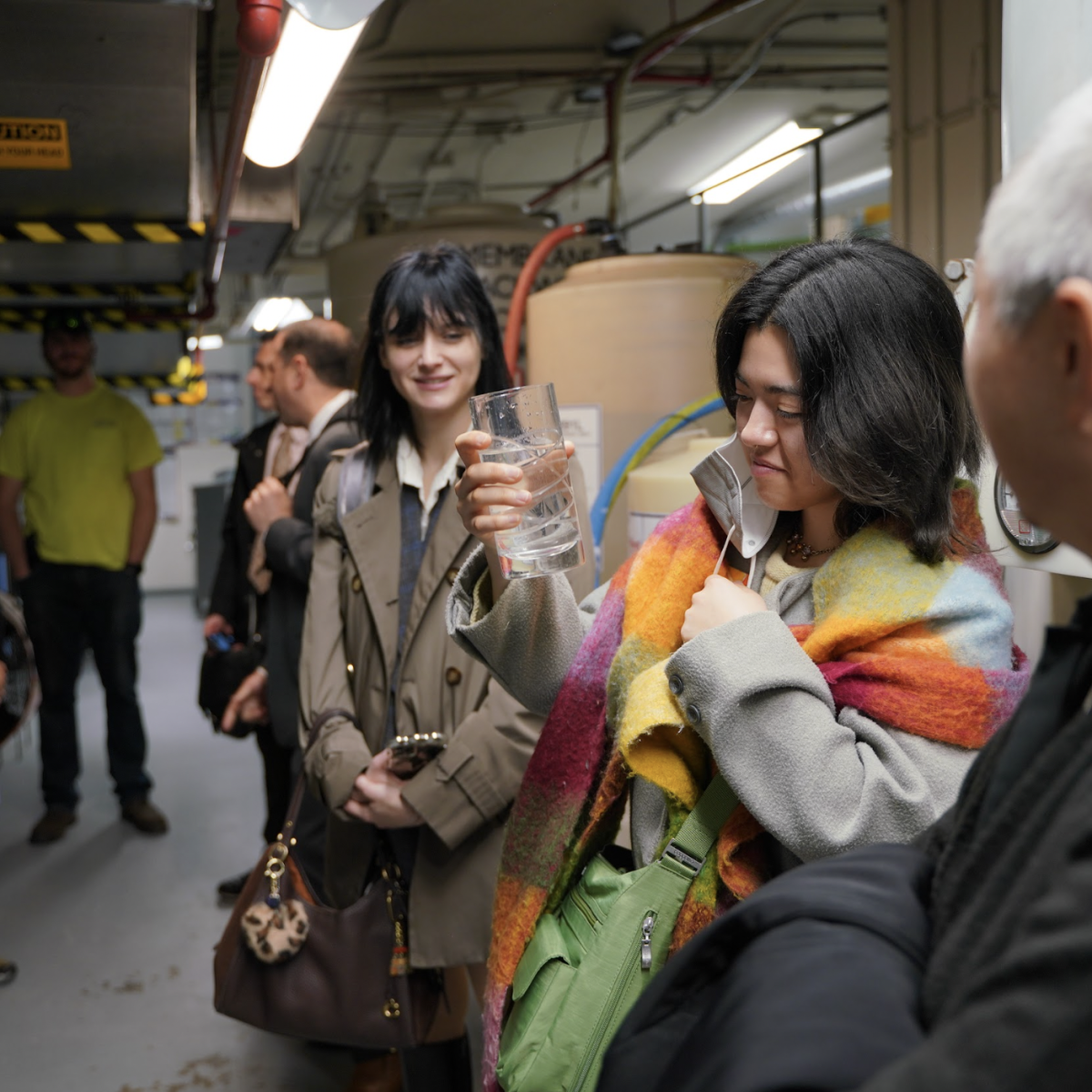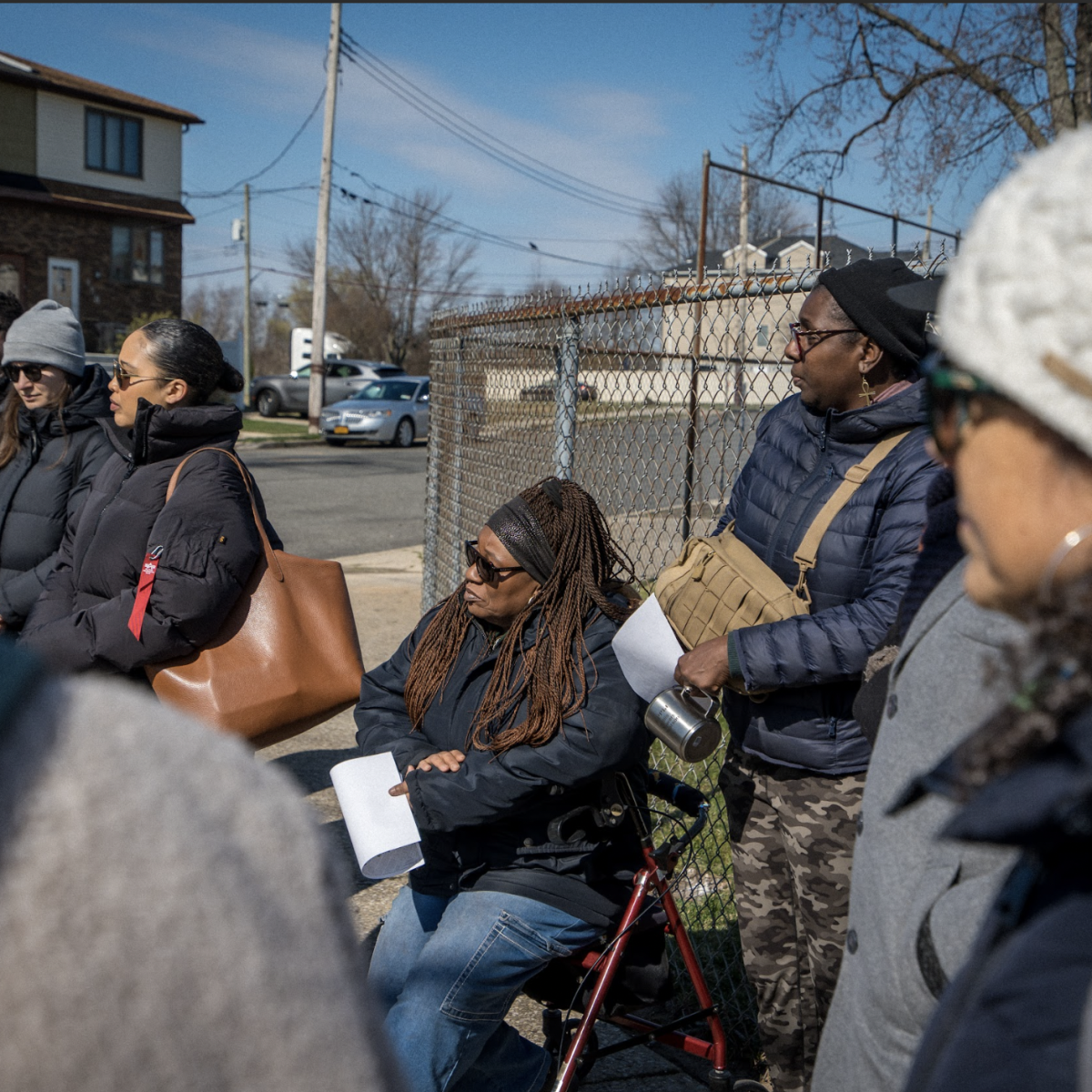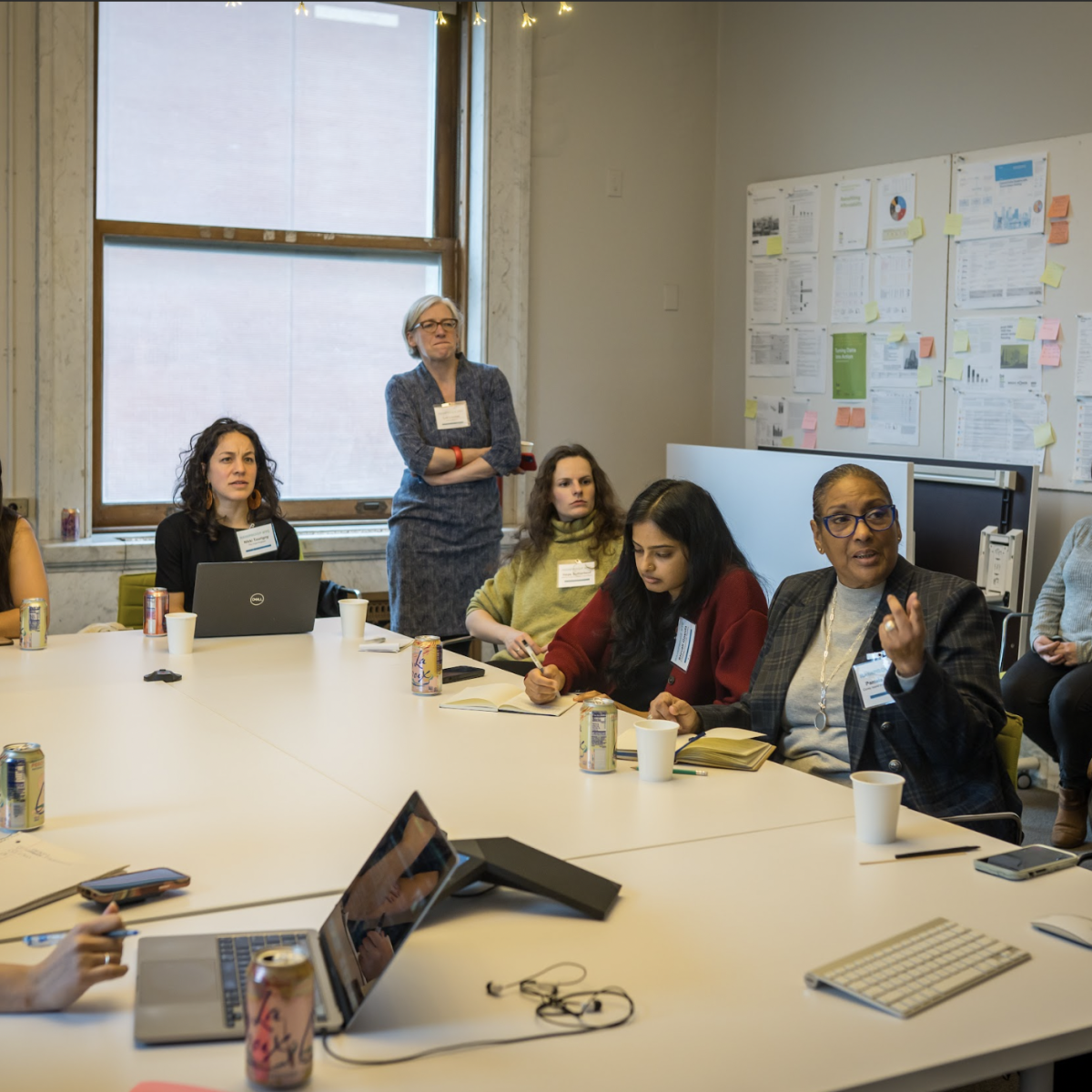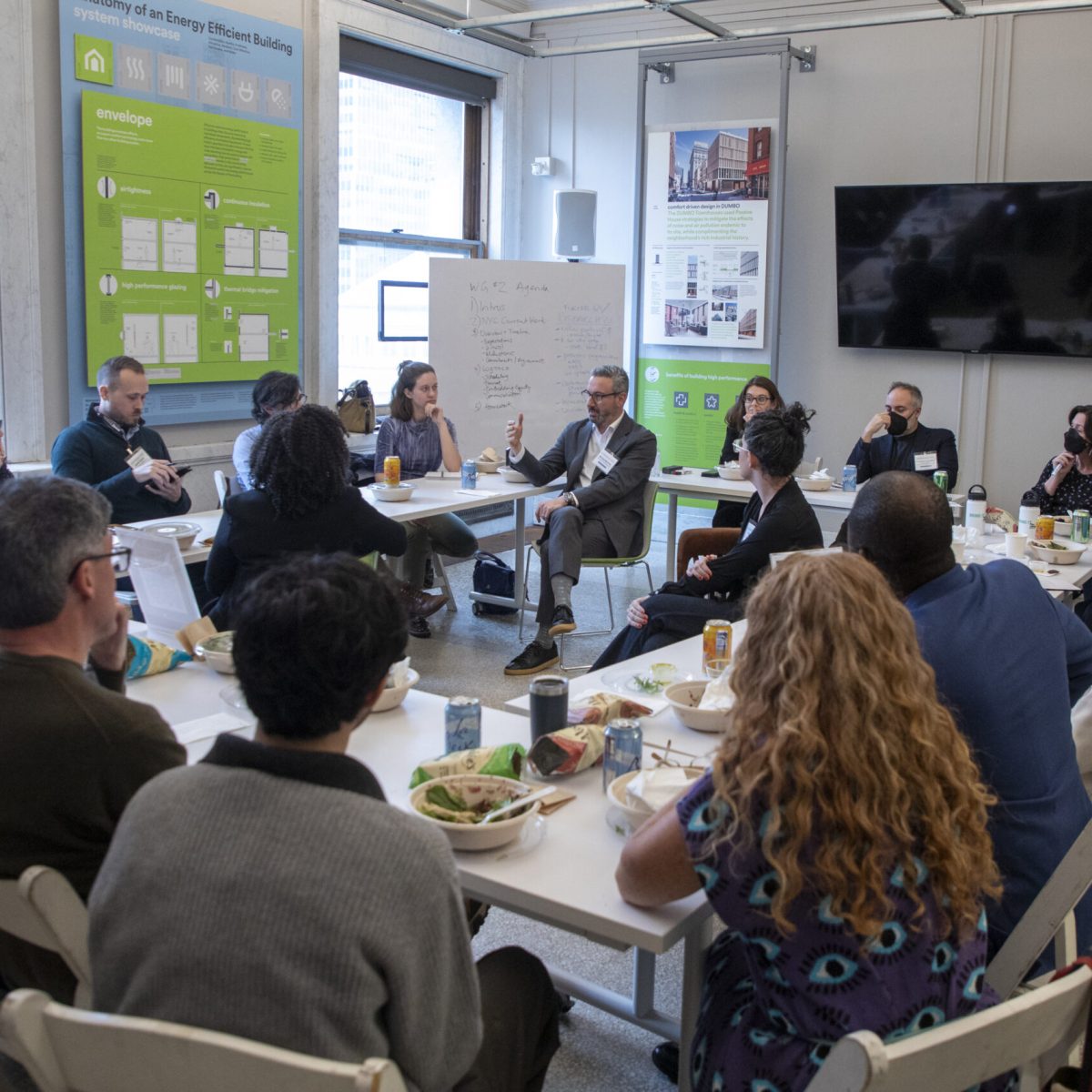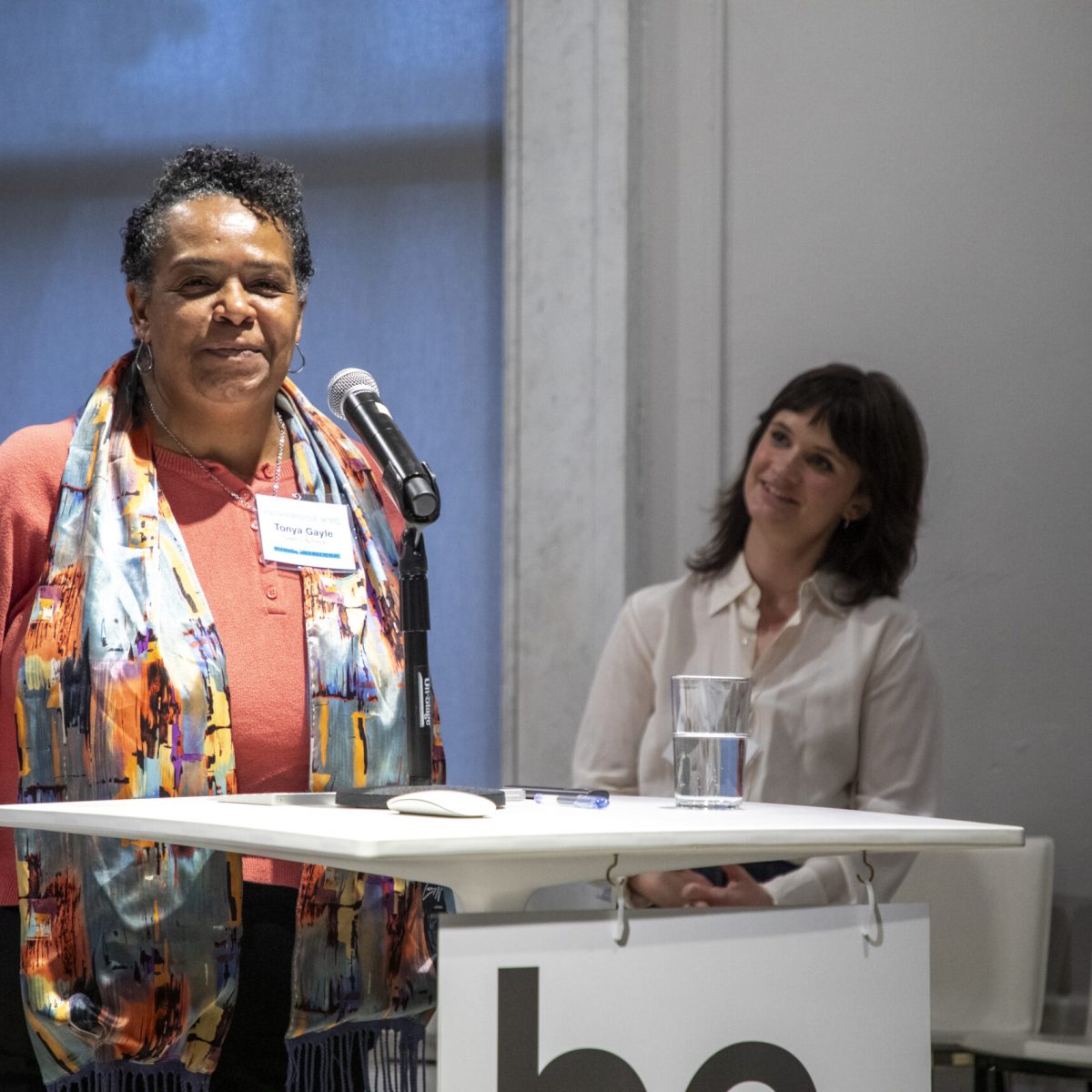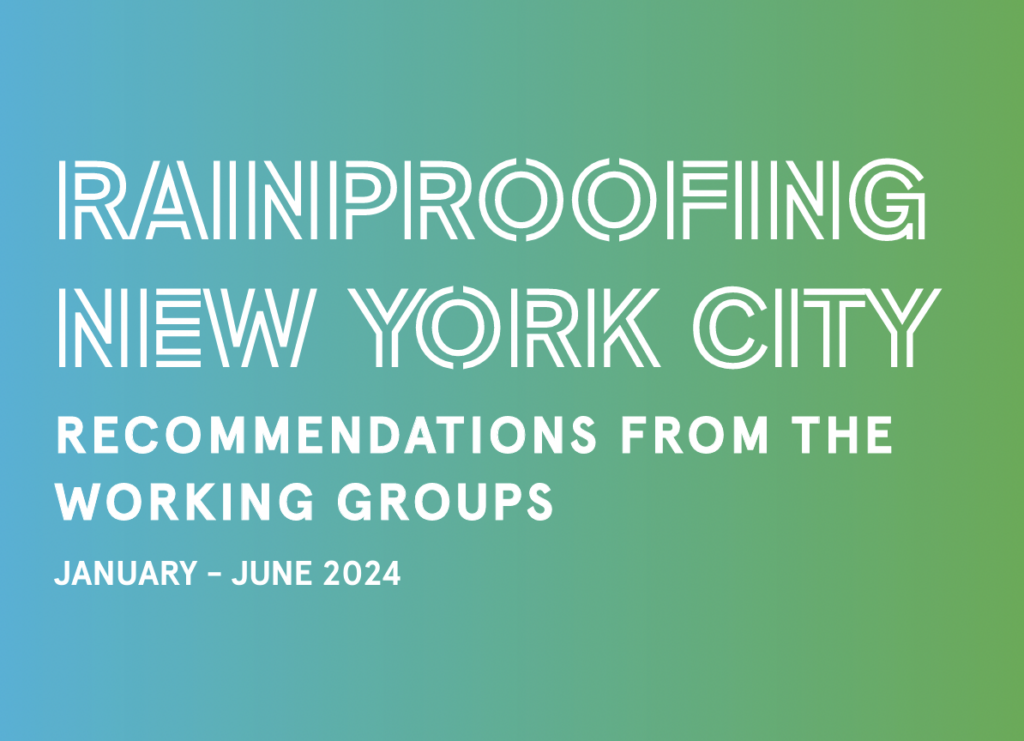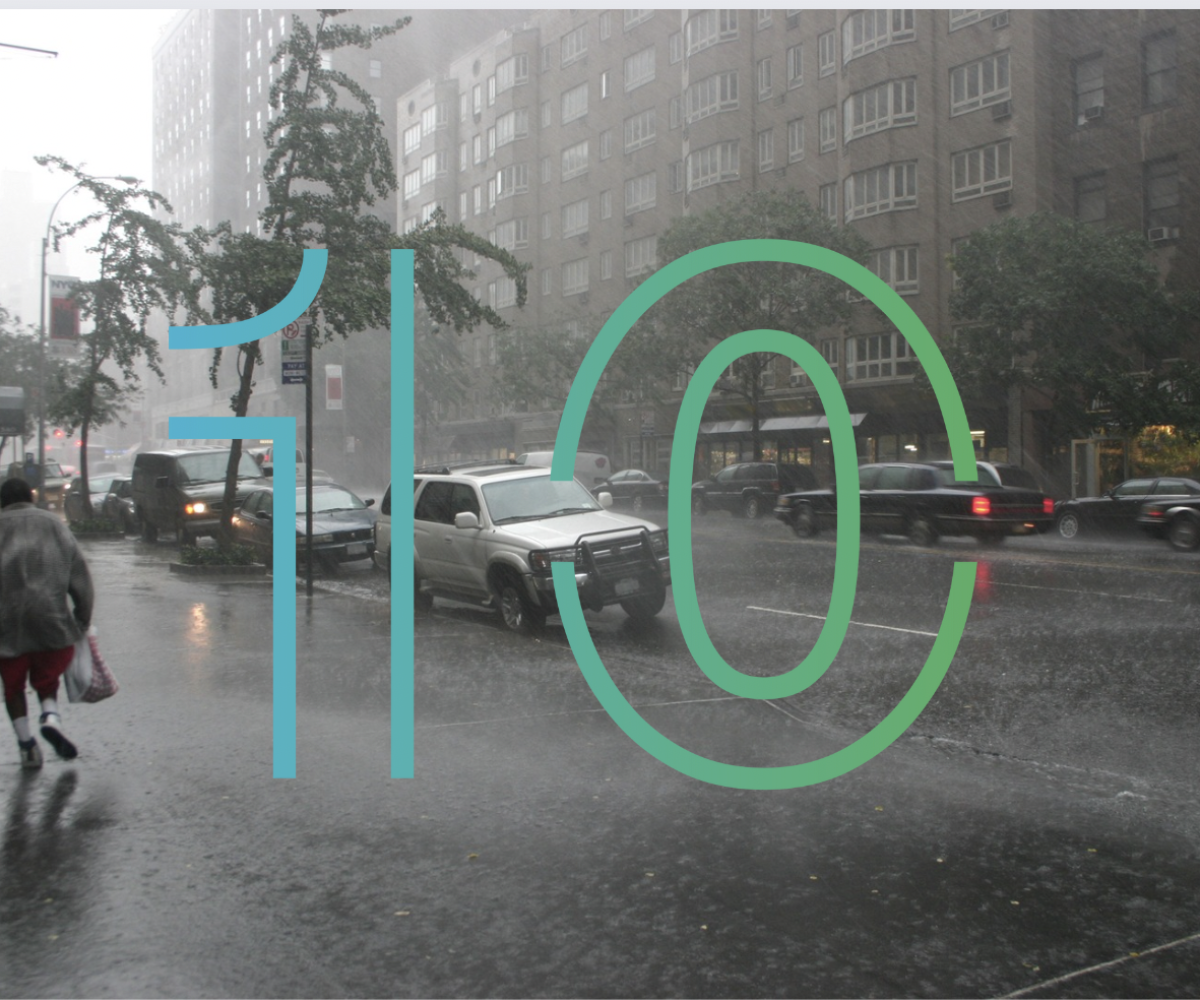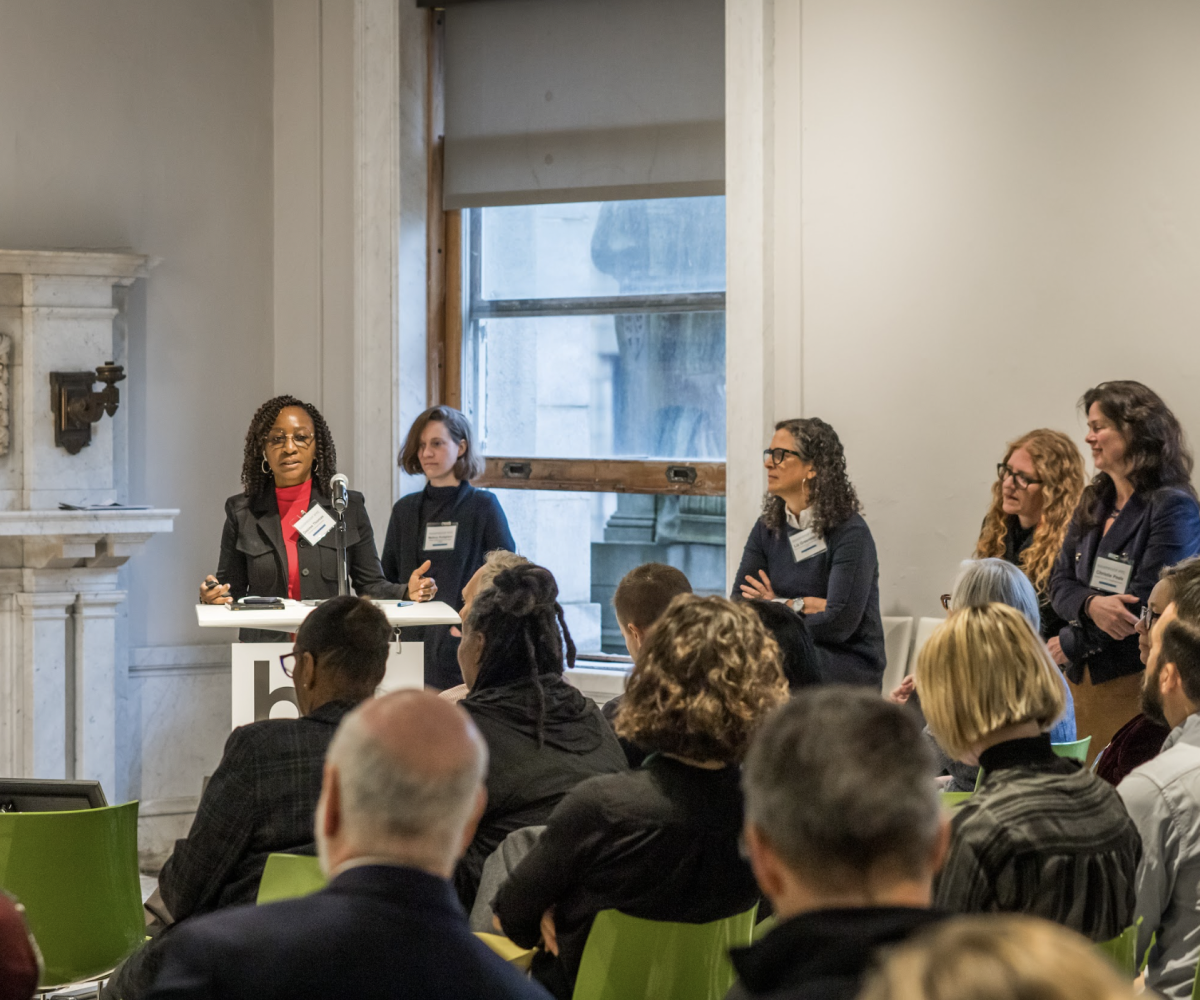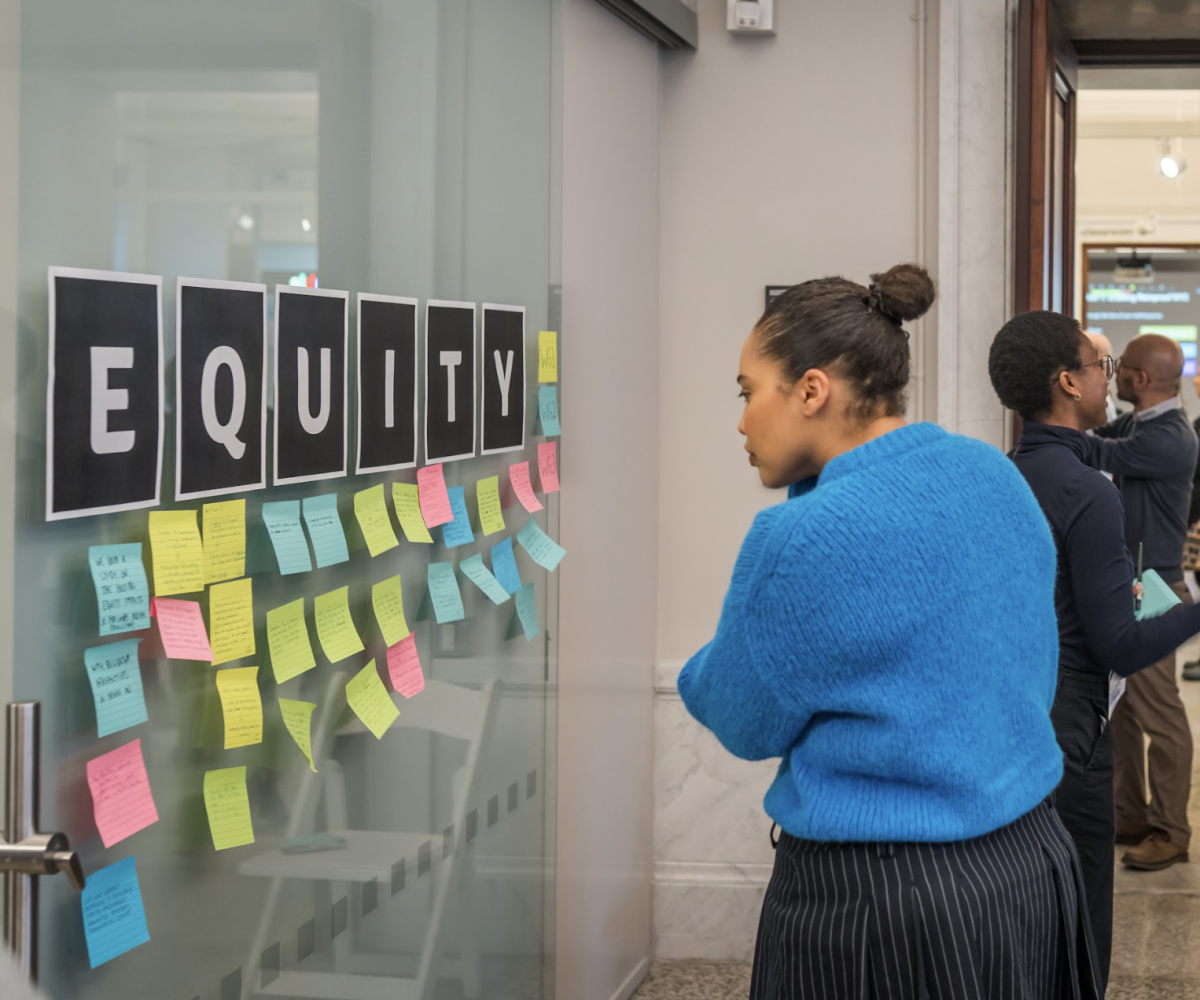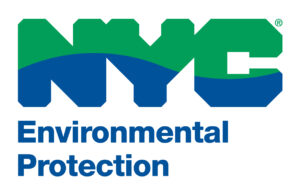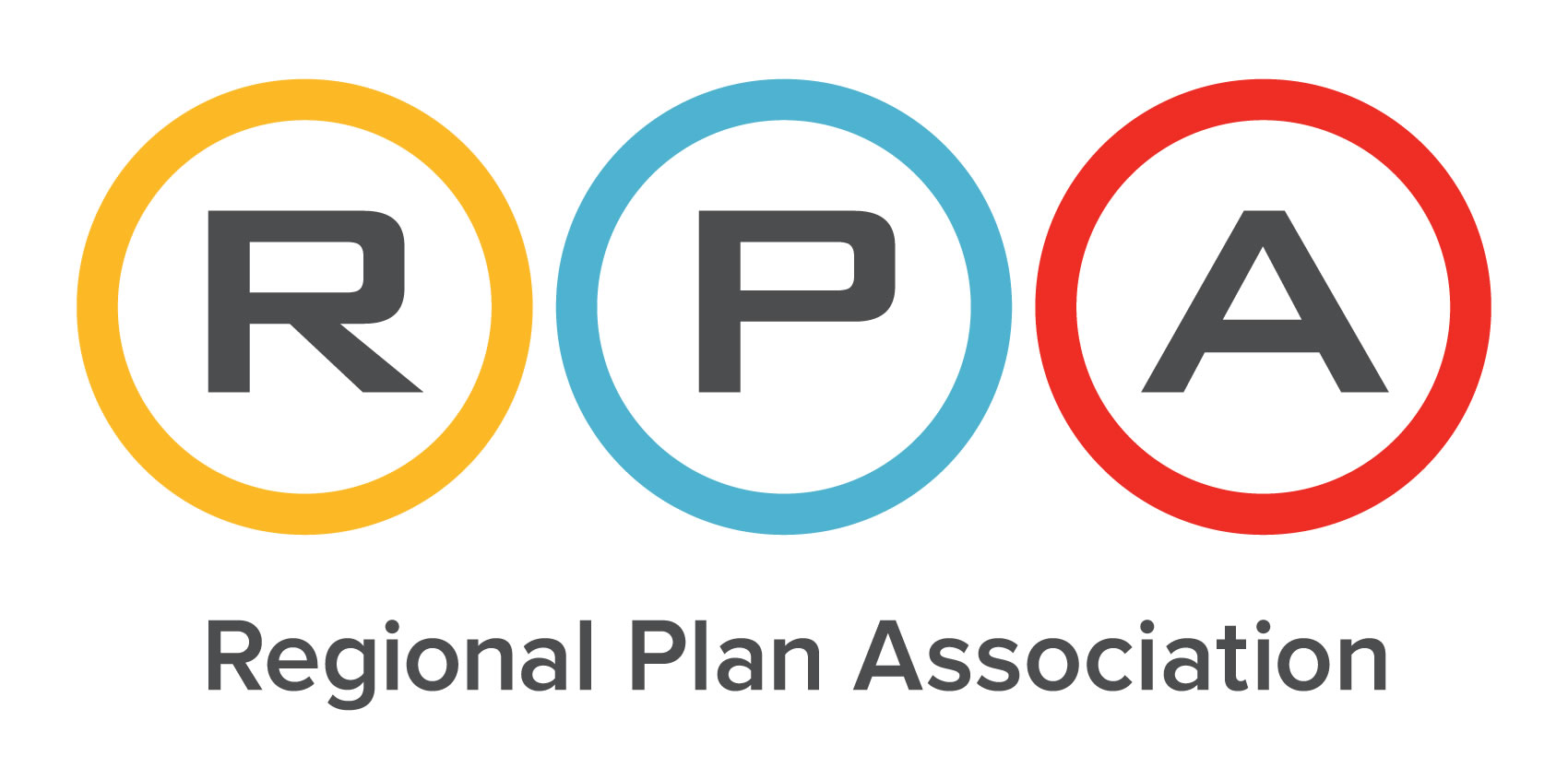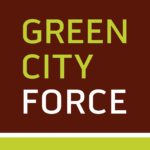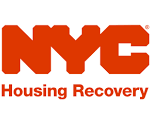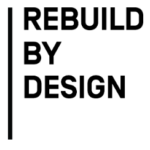The Rainproof NYC Working Groups (Jan - Jun 2024)
From January to June 2024, the Mayor’s Office of Climate & Environmental Justice (MOCEJ), the NYC Department of Environmental Protection (DEP), the NYC Mayor’s Office of Housing Recovery Operations, Rebuild by Design, and One Architecture & Urbanism, led the Rainproof NYC working groups that brought together individuals and organizations with expertise in various fields to identify strategies and policies to address the increasing rainfall in New York City.
The working groups, co-facilitated and composed of NYC agency staff and community leaders, identified and recommended strategies and policies to adapt to increased heavy rainfall.
Participants were selected through an open call process based on their lived or professional experience, diversity, and whether they brought a new perspective to this work. Over 300 applicants applied, and ~50 were chosen to partake in this process.
The participants represented:
- All 5 boroughs
- 12 neighborhood organizations
- 21 city, state, or federal nonprofits
- 14 city agencies, 1 state, and 1 federal agency
- 10 + academic, private, or philanthropy
Image credit: Jean Schwarzwalder, NYC DEP
WORKING GROUP GOALS
ADAPT TO LIVING WITH WATER by using the output from the symposium to inform a collaborative process to design programs, policies, or projects and an actionable and implementable agenda to catalyze New York City’s work forward to address increasing heavy rainfall.
UTILIZE STAKEHOLDER INPUT, expert advice, and best practices from other localities to inform programmatic components
CREATE A DEEPER UNDERSTANDING of the intersection of increasing rainfall with climate justice, adaptation, housing, economic impacts, mental health, and social resilience, and a deeper understanding of local challenges and existing and new programmatic solutions.
CREATE A REPLICABLE MODEL of community and government collaboration in policy design
Working Groups TIMELINE AT A GLANCE
RAINPROOF NYC RECOMMENDATIONS TO Rainproofing nyc
Working Group 1 was tasked with addressing the question of: “How can we effectively utilize space in NYC to equitably reduce the risk from heavy rain and add value to communities?”
Their recommendations are organized within three overarching themes: Learning to Live with Water; Integrating Green & Gray Infrastructure; Improve & Expand Natural Systems.
To read Working Group 1’s recommendations, click here.
Working Group 2 was tasked with determining the parameters and best practices to inform the design of an equitable buyout program for New York City.
To read Working Group 2’s recommendations, click here.
Working Group 3 was tasked with encouraging shared ownership and accountability among government, non-profit, public, and private sectors to address the challenge of heavy rainfall.
To read Working Group 3’s recommendations, click here.
MEET THE WORKING GROUP MEMBERS:
WORKING GROUP 1: How can we shift NYC’s policies and priorities to create a comprehensive plan to prepare for increasing rainfall? Address gaps in infrastructure and risk management to protect from and prepare New Yorkers for more intense precipitation.
To learn more about Working Group 1 and see the participants, click here
WORKING GROUP 2: What does an equitable buyout program look like for New York City? Inform the development of the City’s Housing Mobility & Land Acquisition Program.
To learn more about Working Group 2 and see the participants, click here.
WORKING GROUP 3: How can we build capacity among communities, the private sector, and CBO’s to share responsibility of managing increased heavy rainfall? Every drop counts. Build out an education and communications campaign to build the capacities of communities, the private sector, CBO’s, local nonprofits, and other agencies to do their part in managing increasing heavy rainfall.
To learn more about Working Group 3 and see the participants, click here.
WORKING GROUP OUTPUTS
The “Rainproofing New York City: Recommendations from the Working Groups” report documents the full working group process, serving as a resource for other cities who are working to address the challenge of increased heavy rainfall
To read the full report:
From January to June 2024, residents, nonprofits, government agencies, community organizations, schools, and the private sector have been working to identify answers to these questions to Rainproof NYC.
Learn about Rainproof NYC working groups’ collective recommendations to address this growing challenge for our city:
To read the Working Group recommendations, CLICK HERE>>
Working groups participants and members of the public crafted Rainproof NYC Principles that address:
- Equity
- Collaboration
- Infrastructure & Land Use
- Accountability
- Other
MEET THE Steering Committee

ALAN COHN
Senior Policy & Science Advisor, New York City Department of Environmental Protection (DEP)

AMY CHESTER
Managing Director, Rebuild by Design
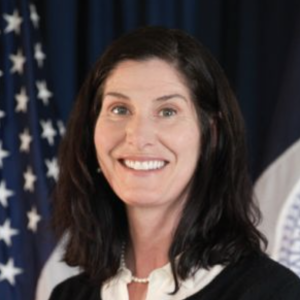
Angela Licata
Deputy Commissioner for Sustainability, New York City Department of Environmental Protection (DEP)
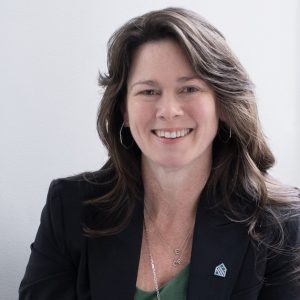
CHRISTIE PEALE
Executive Director, Center for NYC Neighborhoods (CNYCN)

ELIZABETH GREENSTEIN
Chief of Staff, Mayor’s Office of Housing Recovery Operations (HRO)

HAYLEY ELSZASZ
Climate Science Advisor, Mayor’s Office of Environmental Justice (MOCEJ)

JOHANNA LAWTON
Project Manager, Rebuild by Design

LOT LOCHER
International Director for Climate, One Architecture

MATTHIJS BOUW
Founding Principal, One Architecture
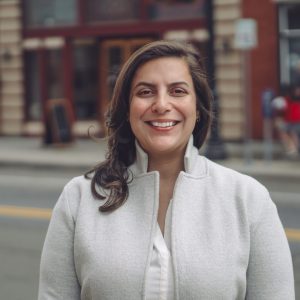
MELISSA ENOCH
Acting Assistant Commissioner for the Bureau of Environmental Planning and Analysis (BEPA), NYC Environmental Protection (DEP)
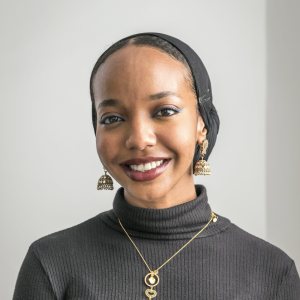
rifal imam
Rainproof NYC Fellow, Rebuild by Design
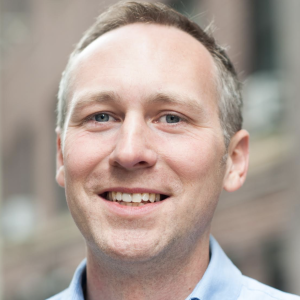
ROBERT FREUDENBERG
Vice President, Energy & Environment, Regional Plan Association (RPA)
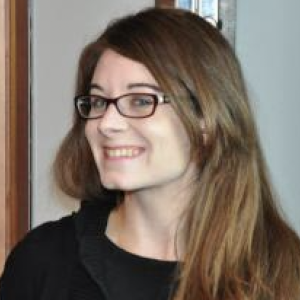
TALLANT BURLEY
Mayor’s Office of Climate & Environmental Justice (MOCEJ)
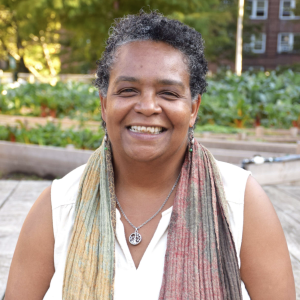
TONYA GAYLE
Executive Director, Green City Force
THANK YOU TO the NorthLight Foundation and Wells Fargo FOR CHAMPIONING THIS WORK.
GET INVOLVED IN RAINPROOF NYC
We each have a role to play in Rainproof.
Rainproof NYC is where all stakeholders learn from each other and act collectively to tackle increasingly heavy rainfall and flash floods.The growing Rainproof NYC network brings together community groups, city officials, technical experts, policy advocates, private sector partners, educators, and more to understand and address flooding in NYC.
Ways you can get involved include:
- Staying updated on new pilot projects, events, and funding opportunities.
- Collaborating with the Rainproof NYC Network.
- Joining a Rainproof Event.
- Learning from other cities in our Rainproof Series.
- Participating or Piloting Rainproof NYC Projects.
- Sharing Rainproof Resources & Expertise.
